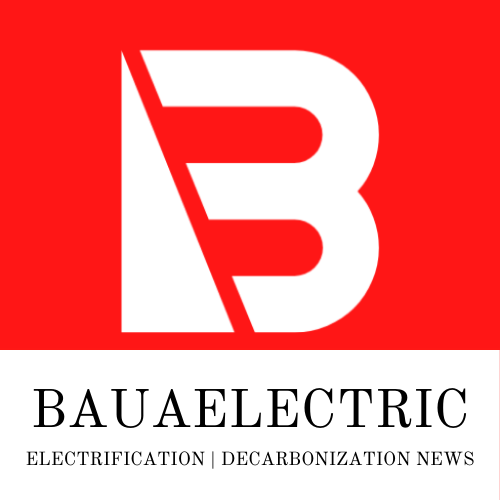20 February 2025

With price increases, economic issues and poor used-car supply, Hungary’s automotive market faces a challenging 2025. Barnabás Kovács, head of valuations for Hungary at Autovista Group, explores the numbers with Autovista24 editor Tom Geggus.
The Hungarian new-car market can be expected to see prices rise this year. A major driver of this trend will be the next stage of the Corporate Average Fuel Economy (CAFÉ) standard.
Gábor Gablini, president of the brand dealers association Gemosz, told Pénzcentrum that stricter emissions standards will lead to further price increases.
Manufacturers will need to fund expensive technological emission-reduction developments. They will also need to steer buyers towards low and zero-emission vehicles to avoid EU penalties on polluting fleets.
To achieve this, carmakers will need to adapt their pricing policies. This will eventually bring battery-electric vehicles (BEVs) and internal-combustion engine (ICE) vehicles to a point of price parity.
Will pushing PHEVs work in Hungary?
In the short term, manufacturers may look to reduce fleet emissions by focusing on the sale of plug-in hybrids (PHEVs). The focal point for this effort will be consumers who are still avoiding BEVs.
Among the available PHEVs meeting the Ministry of Transportation’s 5P and 5N standards, more models now feature longer electric ranges. On top of this, these models have lower emission levels compared to older plug-in hybrids.
However, PHEVs and extended-range electric vehicles (EREVs) are no longer considered ‘environmentally friendly’ by the Hungarian government. This means a loss of green license plate privileges. This includes company, car and acquisition tax exemptions, plus free parking in some cities.
Zero-emission vehicles in the 5E and 5Z environmental protection classes will continue to enjoy these privileges. However, free parking will no longer be available in Budapest from 2027, which has been a huge advantage. Additionally, once free parking has been abolished, the fee will double for BEVs with a gross-vehicle weight exceeding 2 tonnes.
So, while carmakers and consumers would have benefitted from a PHEV push, this now appears far more difficult. Following these changes, the powertrain costs nearly as much as a BEV and has fewer advantages over an ICE model.
Hungary’s economic impact
Price stabilisation may also be hindered by the developing exchange rate between the Hungarian Forint and the Euro. The Hungarian economy has been performing poorly. Investments have been falling drastically, and inflation has been following an upward trend as of the second half of 2024.
The freezing of EU cohesion and recovery funds have affected the whole economy. Accordingly, the central bank’s options for reducing interest rates have narrowed. This may damage the development of more favourable leasing conditions.
On the other hand, savings from redeemed premium government bonds could be channelled back into the economy. The yield level fell in 2024, prompting investors to consider selling their bonds.
Some of the funds generated appeared on the real estate market with an immediate effect. Prices were driven up without any bidding or bargaining.
If bonds are sold this year, it could potentially have a positive impact on new vehicle sales. However, the sales yield could be as low as 4.5% in 2025, down from nearly 19% in 2023.
Positive 2024 for Hungary’s market
Hungary’s new-car market saw a much-improved 2024, with 121,607 units registered across the year. This equated to a 12.9% year-on-year increase, but only a 9% gain on the 111,540 deliveries recorded in 2022.
Light-commercial vehicle (LCV) registrations reached 24,771 units last year. This represented an increase of 19.4% on 2023 and 40.3% on 2022. Unfortunately, a significant number of these newly registered LCVs left the country before turning a year old. For some brands, the re-export rate could even exceed 50%.
The order backlog is still weak compared to the pre-COVID-19 pandemic. The economic situation is the most critical factor. Buying a new car is a significant expense for an average Hungarian household. Additionally, companies have been operating with longer lease terms in recent years.
Hungarian government incentives
The government’s incentive scheme for businesses has driven electric vehicle (EV) sales. Without it, the picture would have been gloomy.
A total of 8,565 new BEVs hit the roads in 2024, according to the European Alternative Fuels Observatory. This was a surge of 40.6% year on year. However, the technology only made up 7% of all sales, up 1.3 percentage points (pp).
PHEVs recorded 5,695 registrations last year, an improvement of 4.5% compared to 2023. The powertrain took a 4.7% market share, down 0.4pp.
The programme is currently undergoing review, with an update expected on 28 February 2025. If the government confirms the incentives are to be reduced or removed, sales could increase ahead of the deadline. On the other hand, the appearance of smaller and cheaper electric models is a promising market development.
With these factors in mind, the Hungarian new-car market can be expected to see 2024’s performance repeated in 2025. No significant changes are currently predicted.
Hungary’s used-car prices
In terms of used-car prices, nominal values are expected to remain stable for ICE models and full hybrids (HEVs). There is the potential for values to increase.
The country’s used-car market is now experiencing poor domestic supply. Meanwhile, used car imports have become more expensive. This is thanks to the performance of the national currency, and rising used-car prices in suppler markets.
Furthermore, there is also a limited capacity for MOT tests, which check the roadworthiness of a vehicle. This is creating a bottleneck for imports of used cars.
There is a huge demand for these vehicles and the number of imports could be far greater. However, imports are being kept down because of the limited capacity of the Hungarian authorities.
The EU’s punitive tariffs on imports from China could help underpin residual values in Hungary. This could help stabilise EV prices following significant price drops in previous years.
However, further price reductions are expected in compact and subcompact segments. This is thanks to the launch of new models with a price tag of around 10 million Hungarian Forints.





